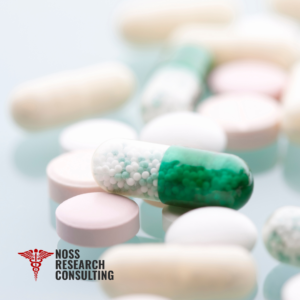
The safety of medicines is a top priority in the European Union, where regulatory agencies, pharmaceutical companies, and healthcare providers work closely to monitor and manage the risks associated with medicinal products. A critical tool in this effort is the EudraVigilance database, a comprehensive system used to detect and evaluate potential safety signals.
What is a Safety Signal?
A safety signal is an observation that a medicine may be linked to an adverse event. However, the detection of a signal doesn’t automatically mean that the medicine has caused the event; various factors could be responsible, including underlying health conditions or other medicines a patient may be taking. Thus, each signal requires careful assessment to determine if there is a causal relationship between the medicine and the adverse event.
Sources of Safety Signals
Safety signals are identified through various sources such as:
- Spontaneous Reports: Healthcare professionals and patients report suspected adverse events.
- Clinical Studies: Controlled trials that may highlight unexpected side effects.
- Scientific Literature: Published studies and articles that can reveal new information about potential risks.
The EudraVigilance database centralizes information on suspected adverse reactions, helping regulatory bodies manage and assess potential risks.
How EudraVigilance Supports Pharmacovigilance
EudraVigilance is a central part of routine pharmacovigilance, the science of monitoring the effects of medicines after they are approved for use. Regular monitoring ensures that the European Medicines Agency (EMA), national regulatory bodies, and marketing authorization holders (MAHs) can access the latest safety data. In compliance with Commission Implementing Regulation (EU) No 520/2012, these organizations are required to continually monitor EudraVigilance data, enabling rapid response to emerging risks.
Collaborative Signal Management and Work-Sharing
The work-sharing framework within EudraVigilance enables efficient signal management across EU Member States. For medicines authorized in multiple countries, a lead Member State may be appointed to oversee monitoring, validation, and confirmation of signals. This approach helps distribute the workload and ensures a consistent review of signals across borders.
For cases without an assigned lead state, all Member States share responsibility for monitoring signals related to the medicines they’ve authorized.
Recommendations by the Pharmacovigilance Risk Assessment Committee (PRAC)
PRAC, a key body within the EMA, is tasked with prioritizing and assessing signals, issuing recommendations based on their findings. Recommendations can include:
- No further action needed.
- Requesting more information or analyses from MAHs, either via routine updates or additional studies.
- Proposing regulatory actions, such as updating product information or enacting urgent safety restrictions.
These actions help ensure that information on risks and safe usage is clear, consistent, and widely accessible to patients across the EU.
Designated Medical Events (DMEs): A Focused Approach
To improve signal detection, the EMA has created a list of Designated Medical Events (DMEs) that flags inherently serious and often medicine-related conditions. This list helps regulators focus on high-priority adverse reactions that deserve immediate attention.
Transparent Communication with Marketing Authorization Holders
Since January 2015, the EMA has been publishing PRAC recommendations on signal management, along with official translations in all EU languages, Icelandic, and Norwegian. This ensures that pharmaceutical companies can update their product information consistently and swiftly, delivering clear communication to patients and healthcare providers across Europe.
The EudraVigilance System: New Developments and Training
In 2017, the EMA launched an updated EudraVigilance system, providing MAHs with direct access to the database. This access, alongside a series of training initiatives—including e-learning and webinars—aims to support MAHs in seamlessly integrating EudraVigilance data into their pharmacovigilance processes.
Aiming for Continuous Improvement
The EMA, in collaboration with the European Commission, introduced a pilot program in 2018 that allows certain MAHs to actively monitor their substances in EudraVigilance. Extended through 2024, this program provides a framework for MAHs to detect signals proactively, streamlining the safety-monitoring process and supporting the overall mission of safeguarding public health in the EU.
Conclusion
EudraVigilance plays a central role in ensuring that regulatory authorities, healthcare providers, and the pharmaceutical industry can work together to manage the risks associated with medicines. By identifying and evaluating safety signals, PRAC recommendations, and maintaining transparency through extensive reporting and training, EudraVigilance remains a vital tool in the EU’s commitment to medicine safety. Through collaborative, continuous vigilance, regulatory authorities can ensure that both patients and healthcare professionals have the most up-to-date information, supporting safe and informed medicine use across Europe.



0 Comments